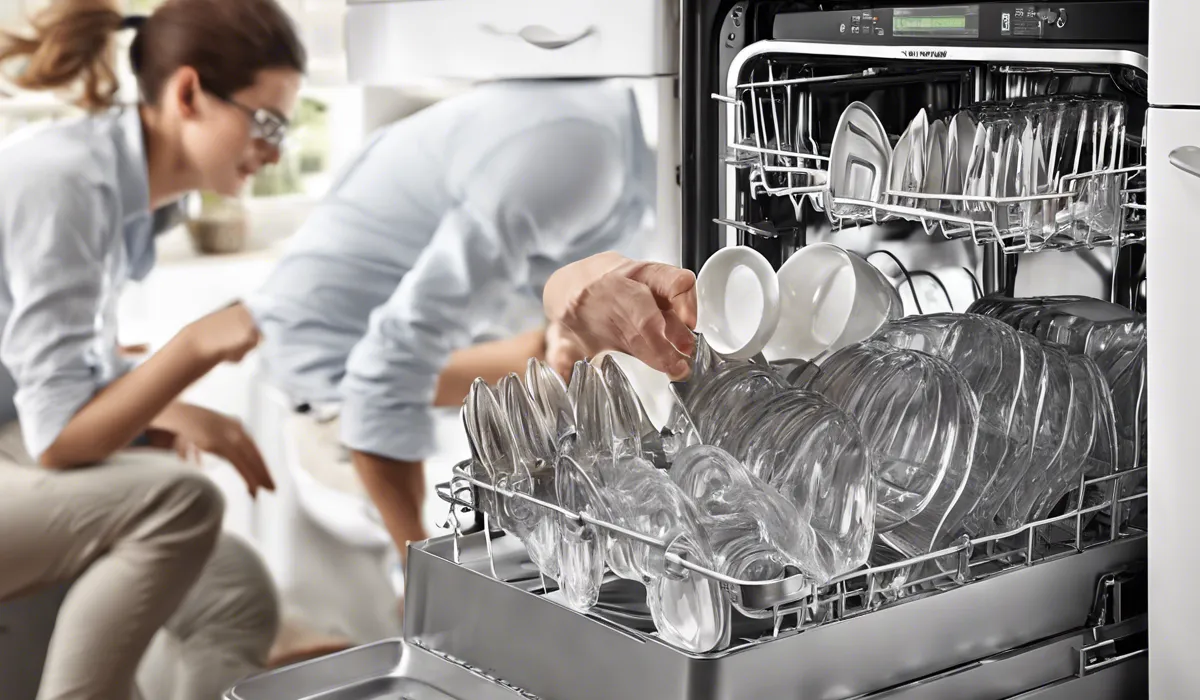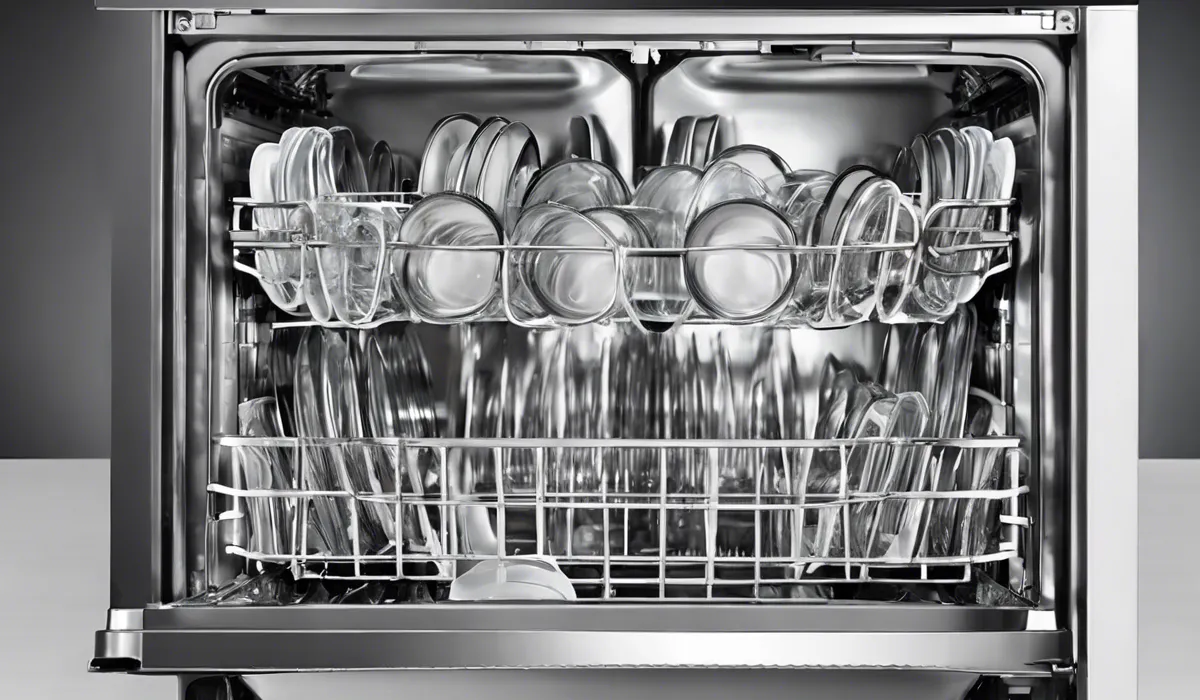How to Load Glasses in a Dishwasher: Spot-Free Tips!
To load glasses in a dishwasher, place them securely between tines on the top rack. Ensure they’re not touching to prevent breakage. Glasses should be angled slightly downward to allow water to drain. Avoid placing glasses over tines, as this can lead to water spots or damage during the wash cycle.
Preparation and Pre-loading Steps

Ensuring Dishwasher Readiness
Begin your dishwashing journey by making sure your dishwasher itself is ready to perform. Firstly, open the dishwasher door and take a glance inside. Are there any remnants from the previous load? If so, remove them.
Next, wipe down the walls and racks if you notice any food particles or residue. This ensures that your glasses will come out sparkling clean and prevents the risk of old food sticking to them during the next cycle.
Prerinsing Glasses: Pros and Cons
Should you rinse your glasses before loading them? It’s a debatable topic. Prerinsing can remove larger pieces of debris, which can reduce the chances of a glass emerging from the dishwasher still dirty.
However, modern dishwashers are designed to handle a certain level of grime, and prerinsing may waste water.
Assess the condition of your glasses and decide whether a quick rinse is needed or if you can trust your dishwasher to do the job effectively.
Sorting Glasses by Size and Type
Organization is key for optimal cleaning. Sort your glasses by size and type before loading. This will help you maximize the space in your dishwasher and ensure that each glass is cleaned thoroughly.
Larger glasses should be placed in a way that they don’t overshadow smaller ones, allowing water and detergent to reach every surface. Similarly, delicate stemware requires careful placement to avoid damage.
Loading Glasses Properly

Placement on the Top Rack
When loading your glasses, always place them on the top rack. The top rack is designed to hold delicate items such as glasses and is further away from the heating element, reducing the risk of thermal stress.
This position also exposes the glasses to gentler water jets, which is ideal for both cleaning and preserving the integrity of your glassware.
Angle and Spacing of Glasses
Proper angling and spacing of glasses are crucial. Tilt glasses slightly downward to allow water to flow over the surfaces and to enable proper drainage.
Be mindful of the spacing between glasses to prevent them from clinking together during the wash cycle, which could result in chips or breakage. Glasses should not be overcrowded, as this can hinder cleaning and drying performance.
Avoiding Contact With Other Dishes
To reduce the risk of damage, ensure that glasses do not touch other dishes or utensils in the dishwasher.
Glasses are particularly susceptible to breakage when they come in contact with heavier items.
Strategically place your glasses so that they have their own space, away from pots, pans, and large utensils that could shift and cause damage during the wash cycle.
Dishwasher Settings and Maintenance

Choosing the Right Wash Cycle for Glasses
Select a gentle or glass-specific wash cycle if available. These cycles are designed to clean effectively without subjecting your glasses to harsh conditions. A softer wash cycle will help preserve the clarity and integrity of your glassware over time.
Importance of Rinse Aid for Spotless Glasses
For spotless glasses, the use of rinse aid is essential. Rinse aid helps water to sheet off glass surfaces, thus preventing those dreaded spots and streaks.
Follow the instructions for your specific dishwasher model to fill the rinse aid dispenser. This small step can make a big difference in the appearance of your glasses after each wash.
Regular Maintenance Tips
To ensure the longevity of both your glasses and dishwasher, regular maintenance is key. This includes cleaning the filters to prevent clogs and checking for wear on the racks and spray arms.
By keeping your dishwasher in top condition, you can trust that it will continue to take good care of your glassware wash after wash.
FAQs About Loading Glasses in a Dishwasher
Where should glasses be placed in a dishwasher?
Glasses should be placed on the top rack of the dishwasher, securely positioned between the tines to prevent movement and breakage.
How can I prevent glasses from touching each other in the dishwasher?
Ensure there is adequate space between each glass when loading them, and do not overcrowd the rack to keep glasses from touching and potentially breaking.
What is the correct angle to place glasses in the dishwasher?
Glasses should be angled slightly downward to ensure proper drainage of water and to prevent pooling on the base of the glass.
Why shouldn’t I place glasses over the tines in the dishwasher?
Placing glasses over the tines can cause water spots or damage to the glasses during the wash cycle due to improper water flow and increased likelihood of movement.
How can I avoid water spots on glasses after a dishwasher cycle?
To avoid water spots, ensure glasses are not placed over the tines and that they are angled correctly for water to drain off. Using a rinse aid can also help prevent spotting.
Final Thoughts
To ensure the safety and cleanliness of glasses in a dishwasher, place them between tines on the top rack without contact with each other.
Angle the glasses downward for proper drainage and avoid resting them on tines to avert water spots and damage.





